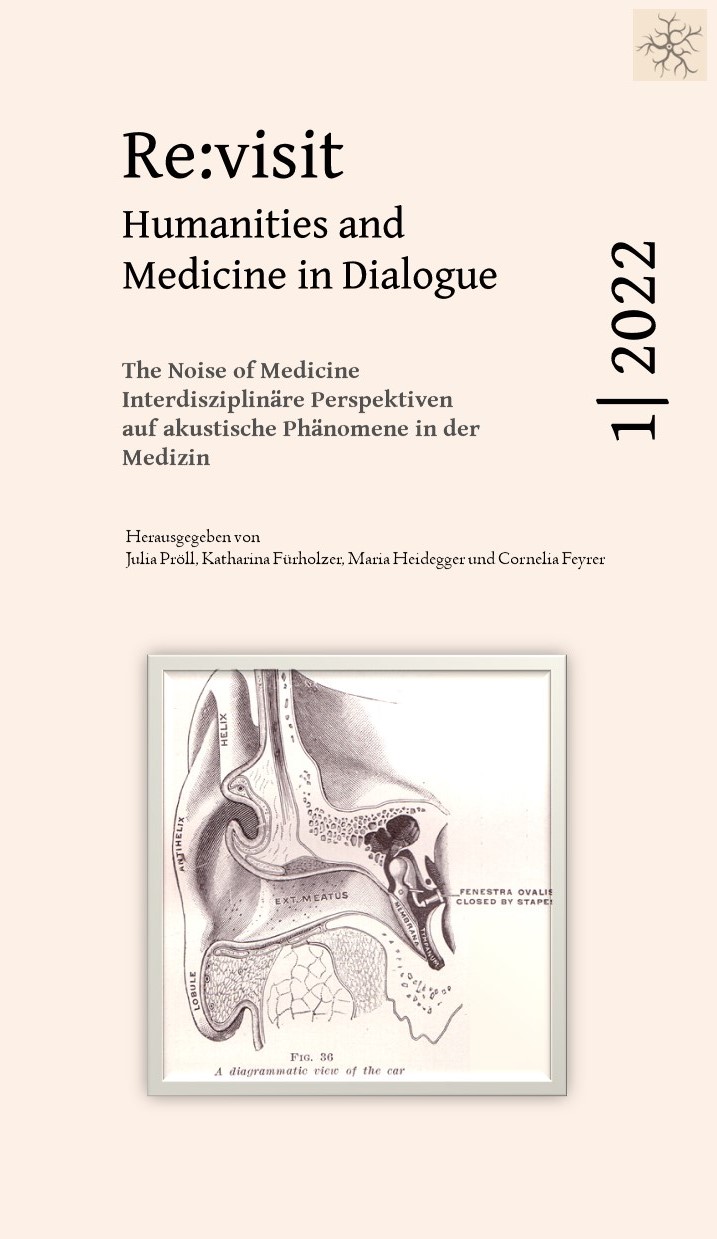Intensivmedizinische Geräuschkulissen in der französischen Gegenwartsliteratur: mehr als nur Alarmsignale?
Cécile Guilbert, Maylis de Kerangal und Boris Razon hören hin
DOI:
https://doi.org/10.57974/Re:visit_2022_1.05Schlagwörter:
French contemporary literature, soundscape of critical care, alienation, resonance, aesthetics of polyphony, Cécile Guilbert, Maylis de Kerangal, Boris RazonAbstract
Situated in the theoretical framework of Sound Studies, the article focuses on the literary representation of critical care soundscapes in three contemporary French novels from three different perspectives. While in Maylis de Kerangal’s The Heart, an omniscient narrator details the stages of a heart transplant in a hyperrealist way, Boris Razon’s Palladium gives voice to the patient, who, apparently reduced to a minimally conscious state and therefore catheterized, ventilated, and unable to articulate, disposes however of a rich and noisy inner space where emerge strident, hallucinatory visions. In Cécile Guilbert’s Réanimation it is finally a relative, the spouse of Blaise placed in artificial coma, who gets a chance to speak and to share her grotesque fascination for her husband transformed into a humanoid robot.
Avoiding a loud, sensationalist approach characterized by drama and the omnipresence of alarming noise, the texts opt for a more decent way to approach this symbolically highly charged location and its various sounds. In fact, as heterotopian ‘other space’ in a Foucauldian sense – a space, centered around the human manipulation of breath and beathing and explored in a first part – the ICU not only breaks with established spatiality and temporality but also with hearing habits. By means of an aesthetics of polyphony, the texts try to transpose – as the second part of the article will show – this unfamiliar soundscape torn between two contradictory tendencies. There are, on the one hand, the sounds attesting the necessary, strategic dispossession of the individual, as for instance, the monotone sound of the lifesaving ventilator, or loud radio music that may be perceived, by the patient unable to act, as noise pollution; butthere are, on the other hand, sounds that try to restitute the single person’s individuality. We can cite, for instance, personal address to patients in a vegetative state or singing songs in order to relieve pain. Such re-individualizing strategies, reintroducing relationality in an emblematic universe of monadic isolation, are able to transform the intensive care unit in a resonant space. Paying attention to the human beings not only behind the machines but also in front of them, the third part explores, then, the soundscape of ‘the other side’ of the illness. For relatives, the mobile phone becomes particularly important in such a context. It is, for instance, via the phone that the parents in The Heart are informed about the grave accident of their son – an information that marks a loud rupture in time dividing it in the day before and the day after. With its never-ending beeps and ringtones, expressing the relative’s vital need to be informed and to rest assured, the phone could even be compared to the machines monitoring the patient as Guilbert states in her novel.
Downloads
Veröffentlicht
Ausgabe
Rubrik
Lizenz
Copyright (c) 2022 Julia Pröll

Dieses Werk steht unter der Lizenz Creative Commons Namensnennung 4.0 International.



